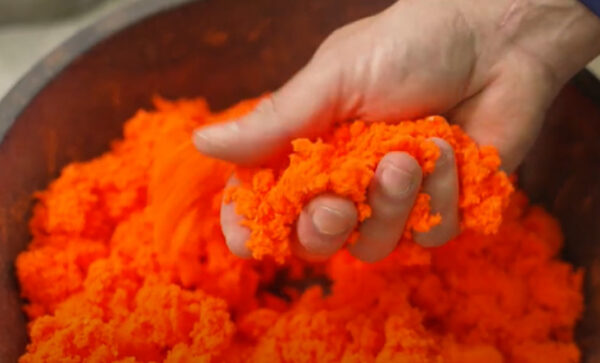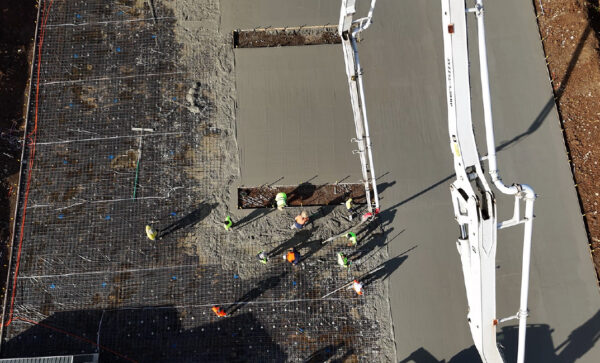By Bridget Sheehan
Cement production has a significant carbon footprint with some estimates that cement manufacturing contributes 8% of total global carbon emissions.
However, it is possible to create a more sustainable form of concrete. One way of doing this is to reduce or replace the cement component.
A VU research team, led by Associate Professor Malindu Sandanayake, with funding from Sustainability Victoria, has designed a new concrete mix that uses shredded hi-vis vests and cardboard in place of precious natural materials that are used to create cement.
Associate Professor Sandanayake and his team have rigorously tested and perfected the concrete mix in engineering labs at VU Footscray Park Campus, which is not only greener, but also stronger, with the fabric increasing the tensile strength.
Hi-vis vests typically last only 20 washes, and this application gives the fabric another utility and diverts it from landfill. The mix also ‘locks-in’ contaminants from textile waste, which can leach and cause environmental damage.
Out of the lab and on trial
A 1,000 square-metre carpark at a monastery in Hoppers Crossing was poured by a team from Outwest Concrete using the new greener mix, alongside a control sample with standard concrete.
The concrete will now be closely monitored over 12 months to see how it holds up to the trials of time, weather and load, and monitored for any leaching.
“We know that there is a lot of research happening around green concrete, but our goal is to test the performance of these mix designs and check how it behaves within the natural environment, how it behaves with different climates, different weather,” Associate Professor Sandanayake explains.
Glen Outten from Outwest Concrete says his team is proud to work on the trial “if we can use products to stop [them] going to landfill by using them concrete; it’s just a no brainer really.”
Manish Bhusal who is completing a PhD in engineering at VU and working as a research assistant on the project, says it is “truly inspiring to witness academic research being actually applied, which reduced almost 16t of CO2 emissions by reducing cement content in the concrete.”
Associate Professor Sandanayake says that the collaboration between the research team, local businesses and community groups has been essential in making the trial happen.
“Local procurement also improves the overall sustainability of the novel concrete mix. It is fabulous to partner with local communities in the West like Mahamevnawa Buddhist Monastery at Hoppers Crossing.”
“Being a university in the West, we believe these collaborations can lead to fantastic tangible outcomes,” he says.




What an inspiring initiative and story. So good to read this! And brava to the researchers.